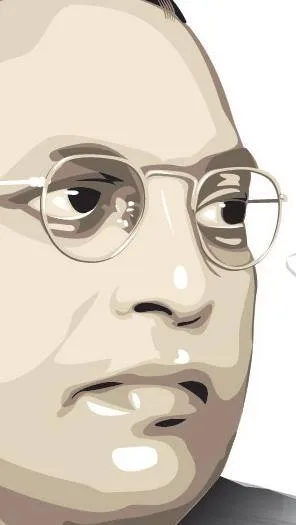Samyak Shambharkar
In a land of contradictions and paradoxes, where rivers of progress often meet the dams of caste and inequality, Dr. Bhimrao Ramji Ambedkar envisioned a nation where liberty, equality, and fraternity weren’t just words inscribed on paper but a way of life. He was more than the architect of India’s Constitution; he was the architect of a dream—a dream that still awaits its full realization. As we sip our chai and complain about the “system”, let’s ask ourselves: Have we truly done justice to his vision?
For the Bahujan Samaj—the untouchables, Dalits, and other marginalized communities—Ambedkar’s mission was clear: annihilation of caste. Not reform, not adjustments, but complete eradication of the inhuman system that ranked human lives like cricket teams. He wanted education, empowerment, and economic freedom for the oppressed. Education, he believed, was the ultimate weapon to break the chains of caste oppression. For India, Ambedkar’s dream went beyond independence from the British. He envisioned a nation free from social slavery, economic disparity, and gender inequality. Yes, dear reader, the man who faced societal hatred for drinking water from a public tank also dreamed of equality for women. Long before the hashtag era, Ambedkar was already working for women’s rights, introducing reforms in the Hindu personal laws to ensure property rights and dignity for women.
If Ambedkar were alive today, he might remind those who call him a “Dalit leader” that he was, in fact, a nation-builder. The Constitution he drafted laid the foundation for India’s democracy. His efforts for labor rights, social justice, and the upliftment of marginalized communities gave voice to millions who were treated as voiceless shadows. Yet, the statues of Ambedkar standing tall in every nook and corner are a bittersweet reminder. Are they symbols of respect or just another way to silence his ideas with tokenism? Imagine Ambedkar’s reaction if he saw people offering garlands to his statues while perpetuating the caste system in their hearts. The irony is glaring and painful.
Sadly, much of his work remains incomplete. The oppressive structures Ambedkar fought against are alive and thriving, often disguised as “meritocracy” and “tradition.” From manual scavenging to matrimonial ads sorted by caste, the systemic discrimination persists. The wealth gap in India is widening faster than the gap between promises and action in election manifestos. Ambedkar’s vision of economic democracy remains a distant dream. While women today are CEOs and astronauts, they are also victims of honor killings, dowry deaths, and everyday sexism. Ambedkar’s reforms need to leap from textbooks to real life. Education, which he emphasized as the key to empowerment, still eludes countless children who sit under the open sky for classes, while the privileged debate on how to make private schools more “premium.”
Consider one story from Ambedkar’s life, a poignant example of his relentless fight for equality. In 1927, he led the Mahad Satyagraha, where he and hundreds of Dalits marched to access the Chavdar Tank, a public water source in Maharashtra. This act of defiance was not just about water but about asserting the right to equality and dignity. The symbolic drinking of water—something so fundamental yet denied to Dalits—shook the foundations of caste-based oppression. The Mahad Satyagraha remains a testament to Ambedkar’s courage and his unwavering commitment to breaking the shackles of social injustice.
Imagine DR Ambedkar sitting under a banyan tree, sipping chai, and asking you, “So, what have you done today to make this country a little more equal?” Would you have an answer? It’s easy to light candles at India Gate or post Instagram stories with hashtags on Ambedkar Jayanti. The hard part is living his vision—standing up for what’s right, fighting discrimination in your daily life, and ensuring that liberty, equality, and fraternity don’t just stay in the preamble but seep into every corner of our society.
Ambedkar gave us the roadmap. The journey is ours to complete. Let’s roll up our sleeves and get to work. After all, the nation he dreamed of isn’t built by mere admiration but by action. Or as Ambedkar might have said, “Don’t just worship me; work for the ideals I stood for.”
~~~
Samyak Shambharkar is a MBA Student & Co-founder of Takshashil Foundation, a non-profit initiative.









